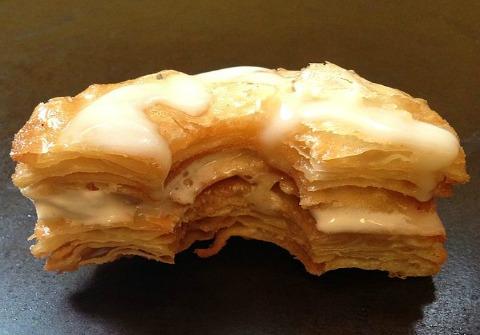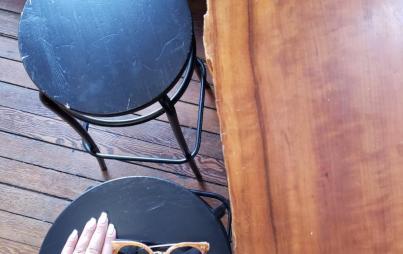
Image: commons.wikimedia.org.
No doubt like many of you, I’m a child of the 1990s, from somewhere in ruralish-suburbanish Middle America. As such, my restaurant experiences consisted largely of Applebee’s and its many iterations, reasonably-priced corporate steakhouses, and a smattering of round-eye-catering Mexican and Asian establishments. I’ve gradually evolved to focus more on local joints—dives, authentic(ish) ethnic foods, and foodie establishments (and fast food—who am I kidding?). So, the high-brow European culinary tradition of Julia Childs has never been within my experience. And it’s my loss, according to prominent New York magazine restaurant critic, Adam Platt—especially on the dessert front. In fact, he makes a bold claim:
For lovers of the old-fashioned, sit-down restaurant dessert, this is the Dark Age.
Yikes! Platt contrasts sweets of today against mid-to-late century trends, and finds the modern offerings wanting. He’s simply not titillated by current artisanal bakeries, quirky gourmet ice cream and newfangled doughnut shops (talking to you, cronut obsessives), ready-made puddings, and the so-in-right-now trend for carrot cake and other vegetable concoctions. But he reserves his real contempt for Joe the Plumber desserts—like chocolate sundaes and “stable, prefabricated layer cakes” (hello Applebee’s!).
Besides bemoaning the paltry portion size of many foodie desserts (here here!), Plat points to a crucial missing factor from the past: decadent variety. You see, in days of yore, dessert was apparently taken dead seriously, and it was all about options. He claims that high-rank kitchens produced “a glamorous crescendo of sweets at the end of every meal,” and even standard-fare restaurants provided “the ancient pageantry of rolling dessert carts and 15-minute souffles.” In contrast, modern options are relatively paltry, and, he feels, often taste essentially the same. A cupcake is a cupcake is a cupcake.
For all you fellow Millennials, I’ll specify some of the reveries of olden times. Platt mentions longing for delicate îles flottantes—which, Google revealed, are “Floating Island Desserts.” Some other espoused classics of the past: claflouti, bouchon, mousse, an assortment of specialized cakes like Viennese sachertorte, and icon of mid-century decadence: Baked Alaska. Pastry opulence.
How did we arrive at these trying times for glucose creations?
Culprit 1: Post-recession dining culture. Restaurants scrimp where they can, and dessert takes it in the teeth. Platt says even upscale restaurants are ditching full-time pastry chefs, and instead fill menus with pre-made pies, cakes and puddings. Traditional white-tablecloth restaurants priding themselves on dessert are increasingly rare, and the new hot-spots of innovative savory cooking—typically small, elite tasting rooms—shaft dessert, providing only meager tastings of sweet concoctions.
Culprit 2: Changing tastes. Which kind of goes back to being cheap (and lazy!). He laments the rise of “no-frills cooks (and eaters), who prefer a midnight tub of Ben & Jerry’s ice cream to a well-fashioned éclair any day.” In our comfort-food era, the mere presence of sugar makes our desserts good to go—no need for skilled preparation. Wow, we’re slobs.
While I can’t vouch for the credentials of desserts of the golden age, my own experience does align with Platt’s assertions of today. Premade brownies suck and a melon-ball-sized scoop of gourmet grapefruit ice cream with a teaspoon of salted-caramel sauce leaves me underwhelmed, but still craving a larger portion.
What’s this country coming to? If fat, sugar-obsessed Americans are dropping the ball on dessert, what hope can we have for the rest of the world? Humanity may be hanging by a thread. Let’s bust out our meringue beaters, figure out how to make these Floating Island doo-dads, and hope to high hell they taste as good as Platt asserts.






